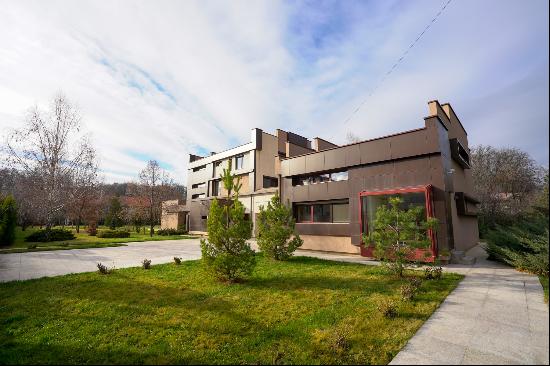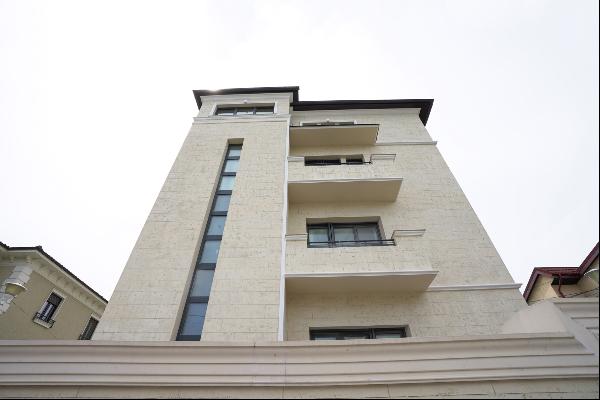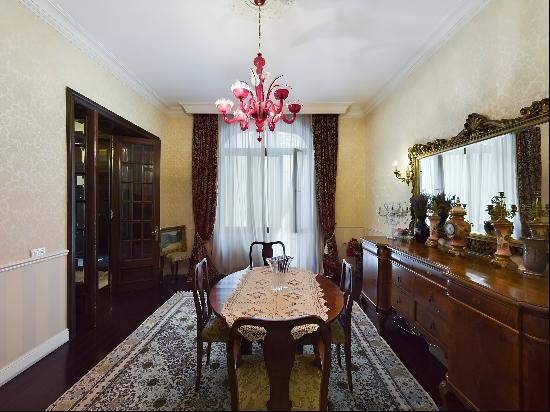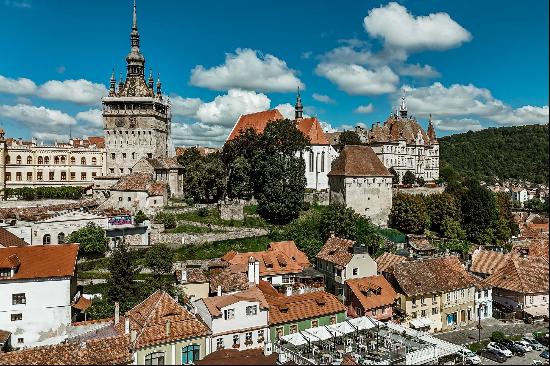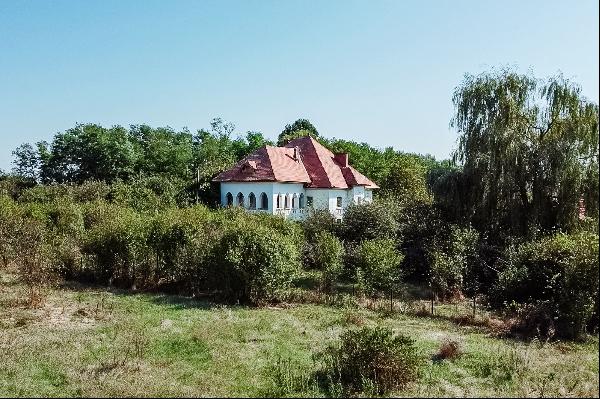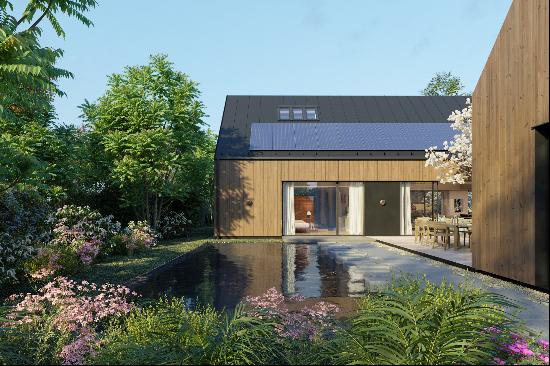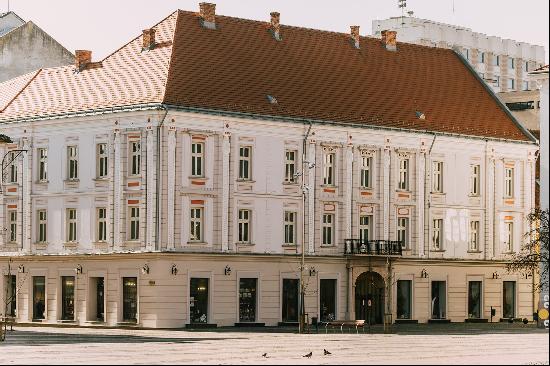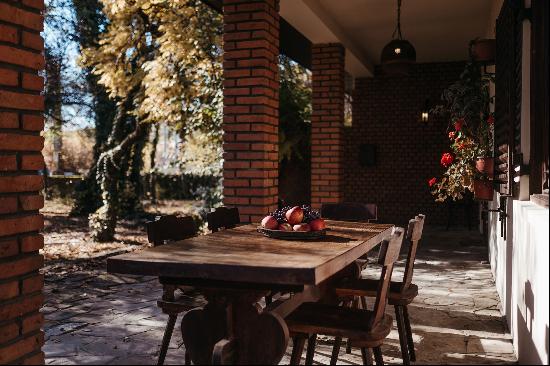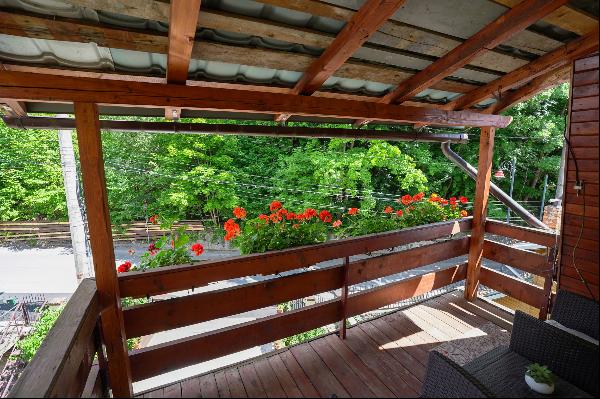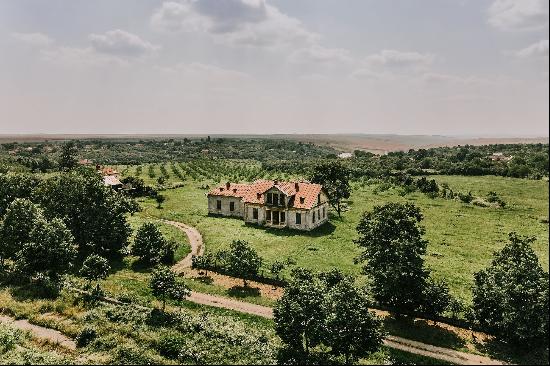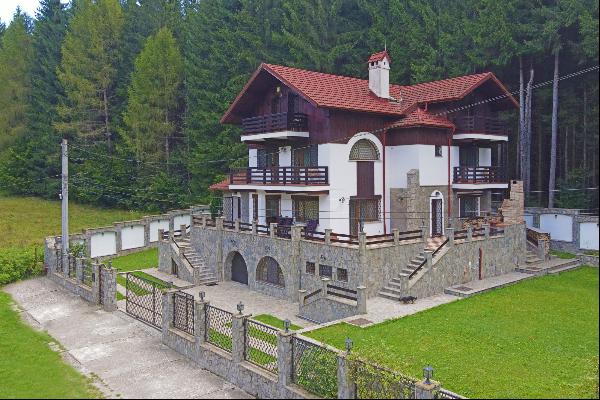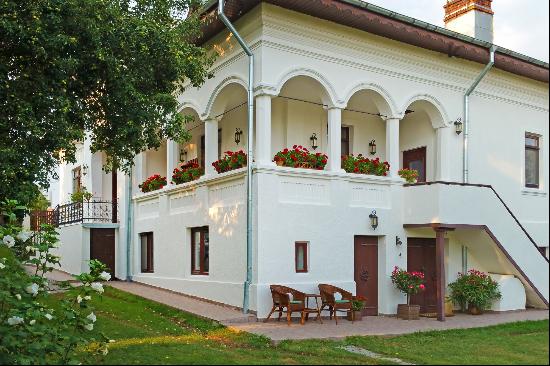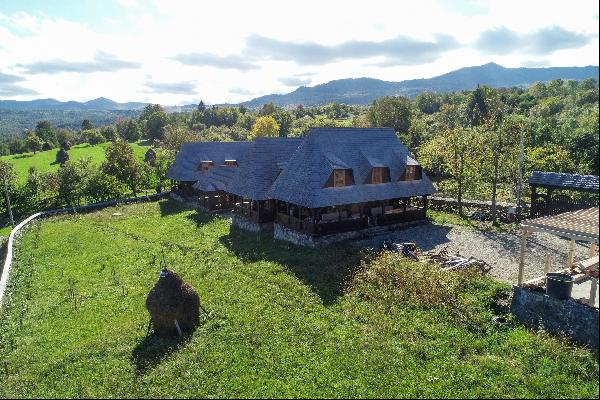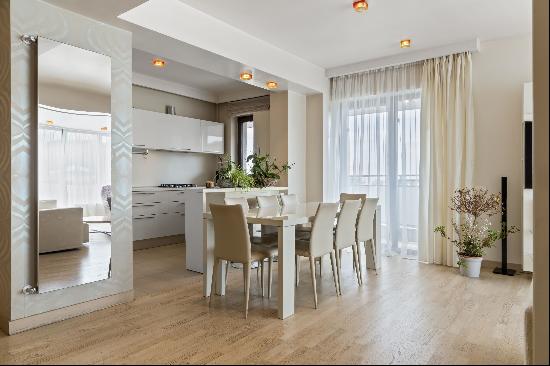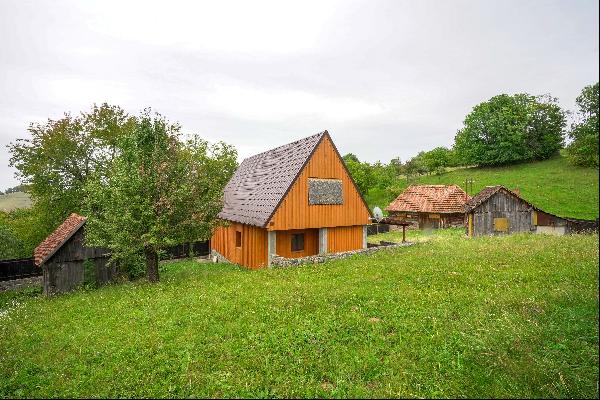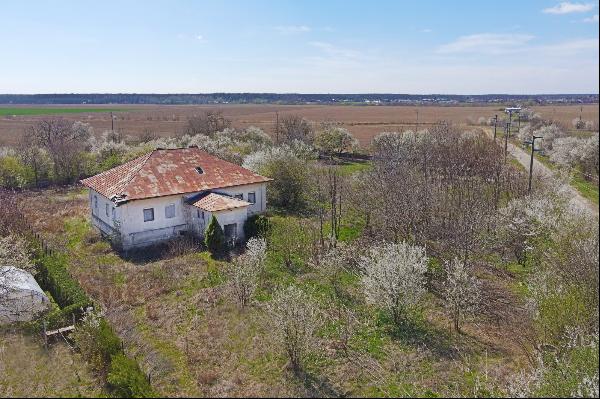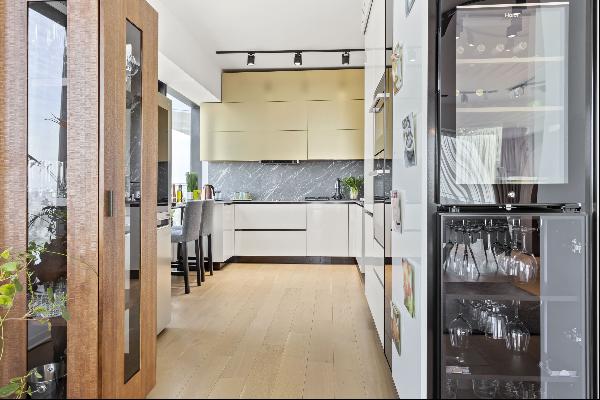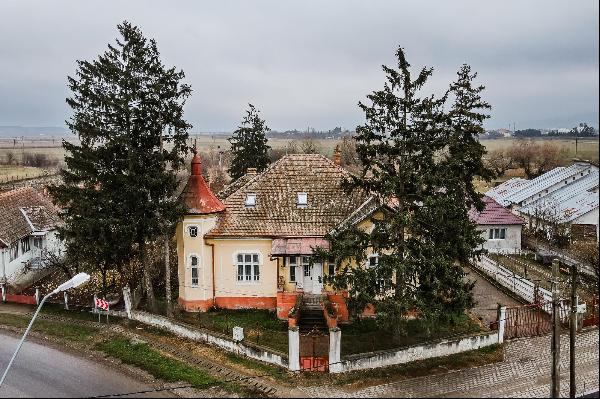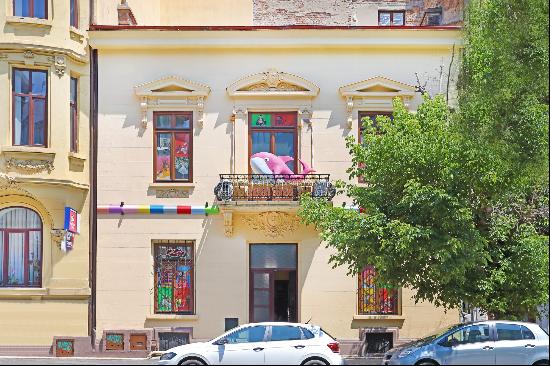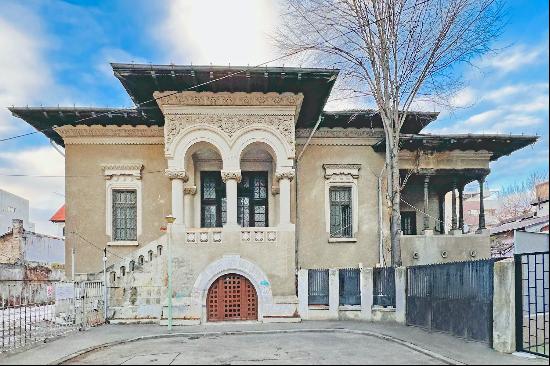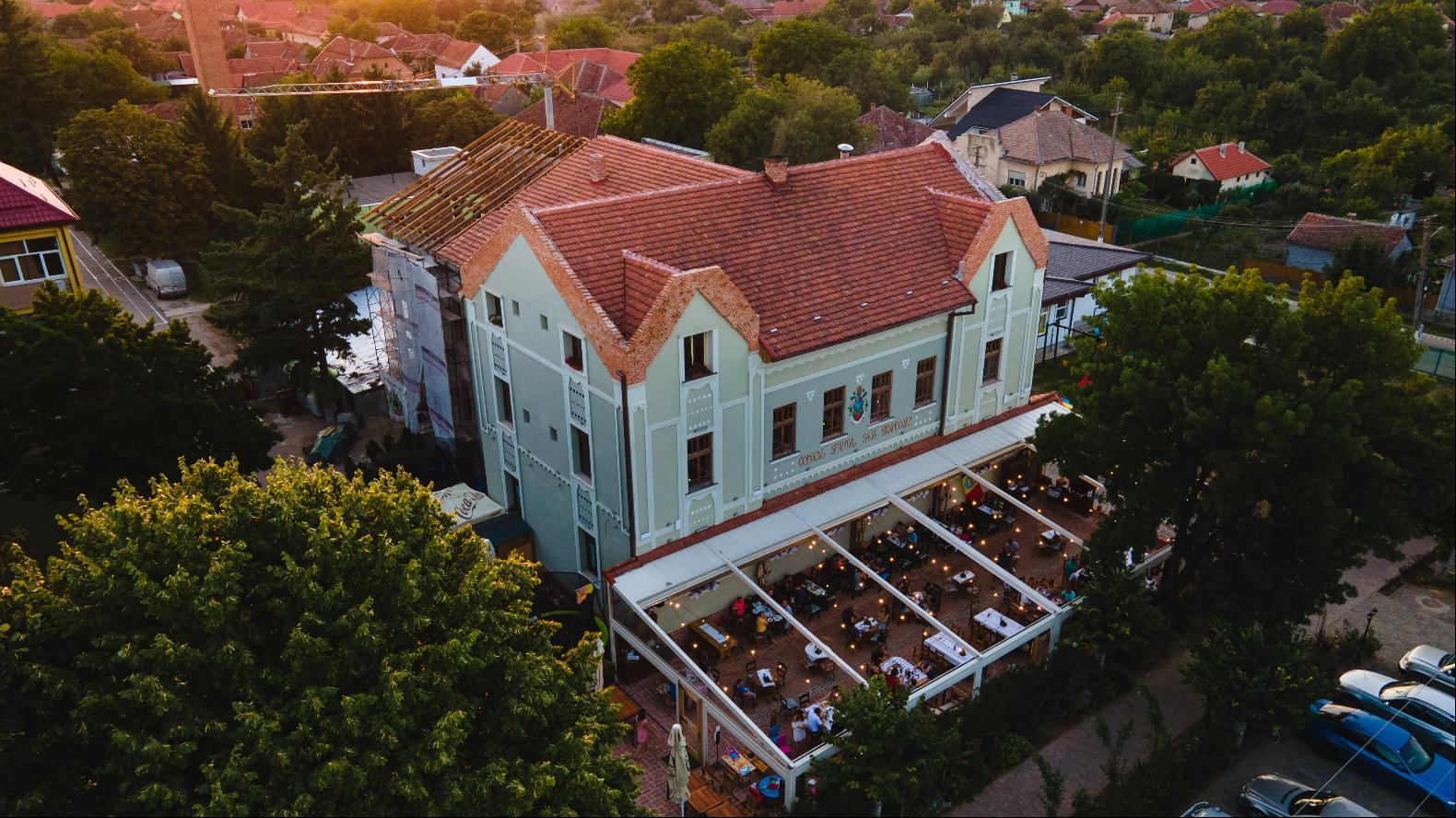
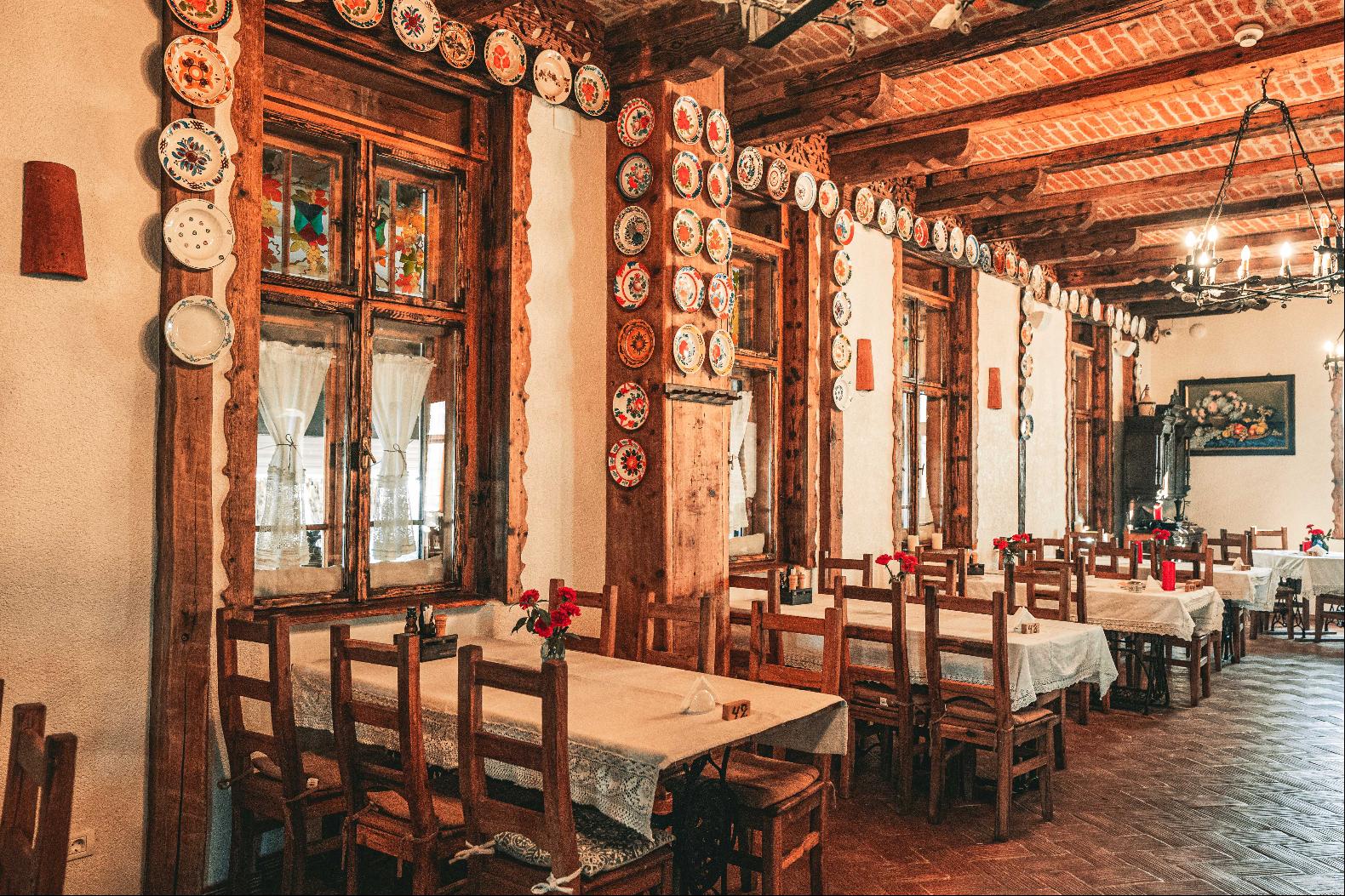
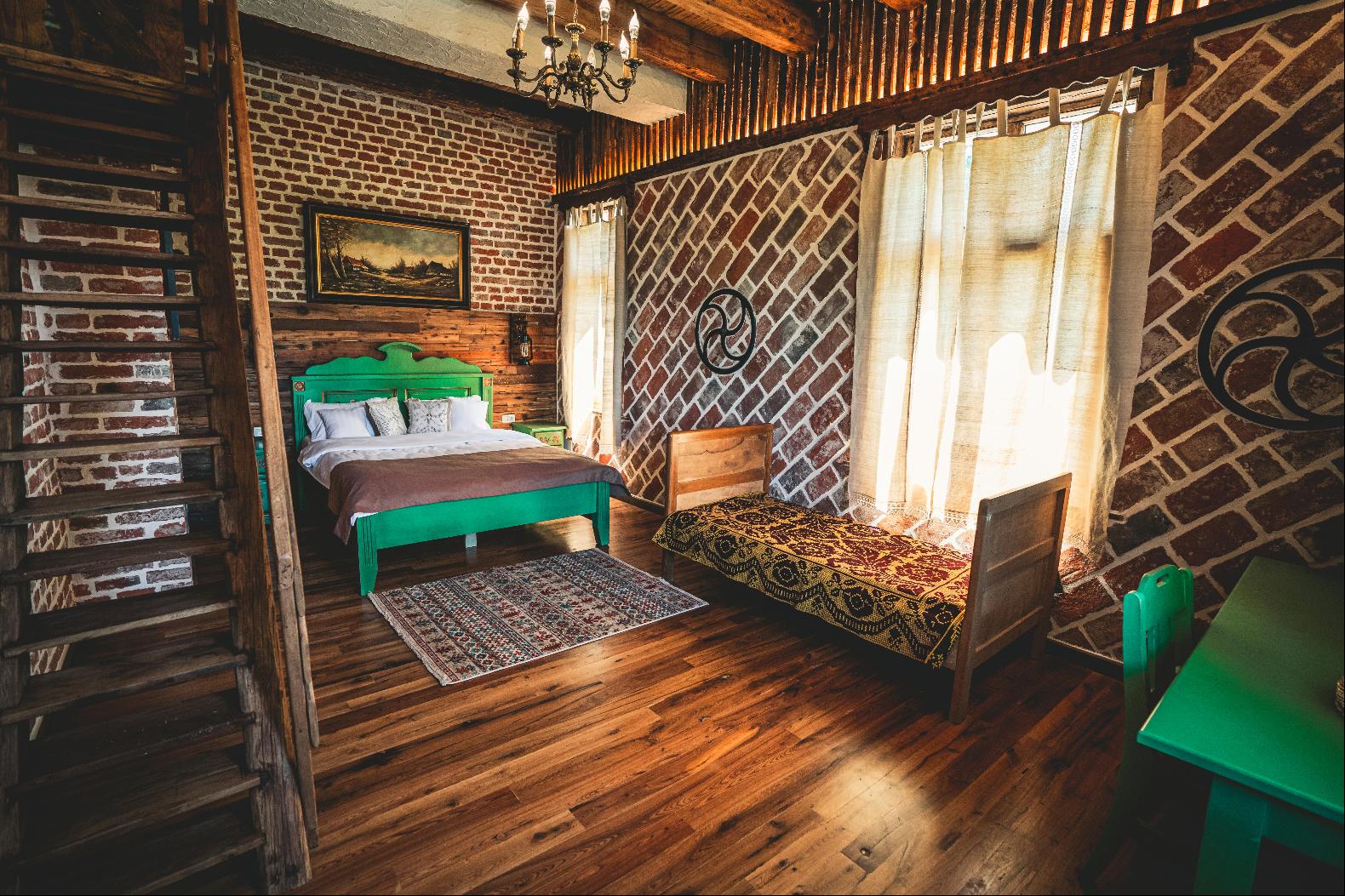
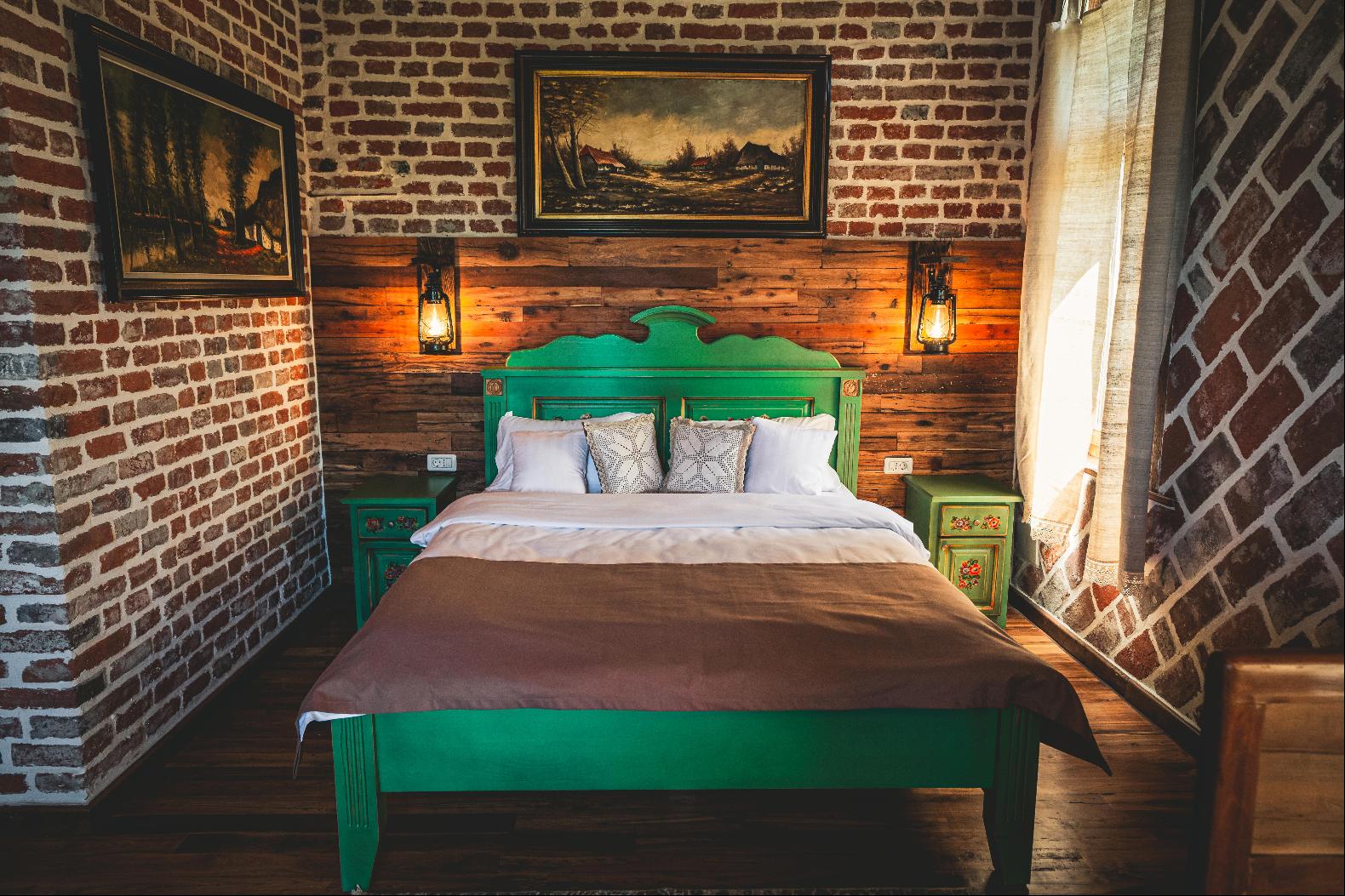
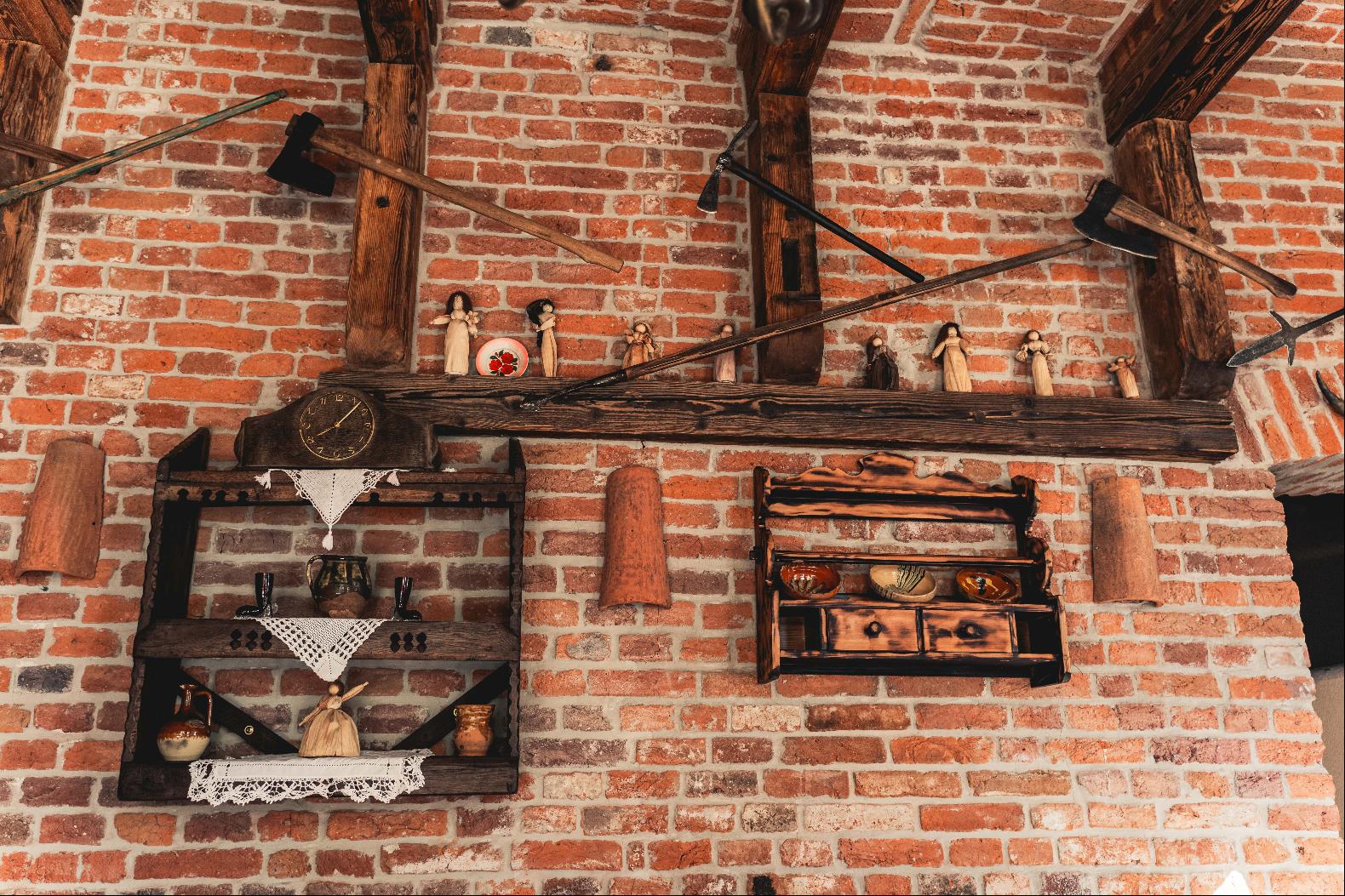
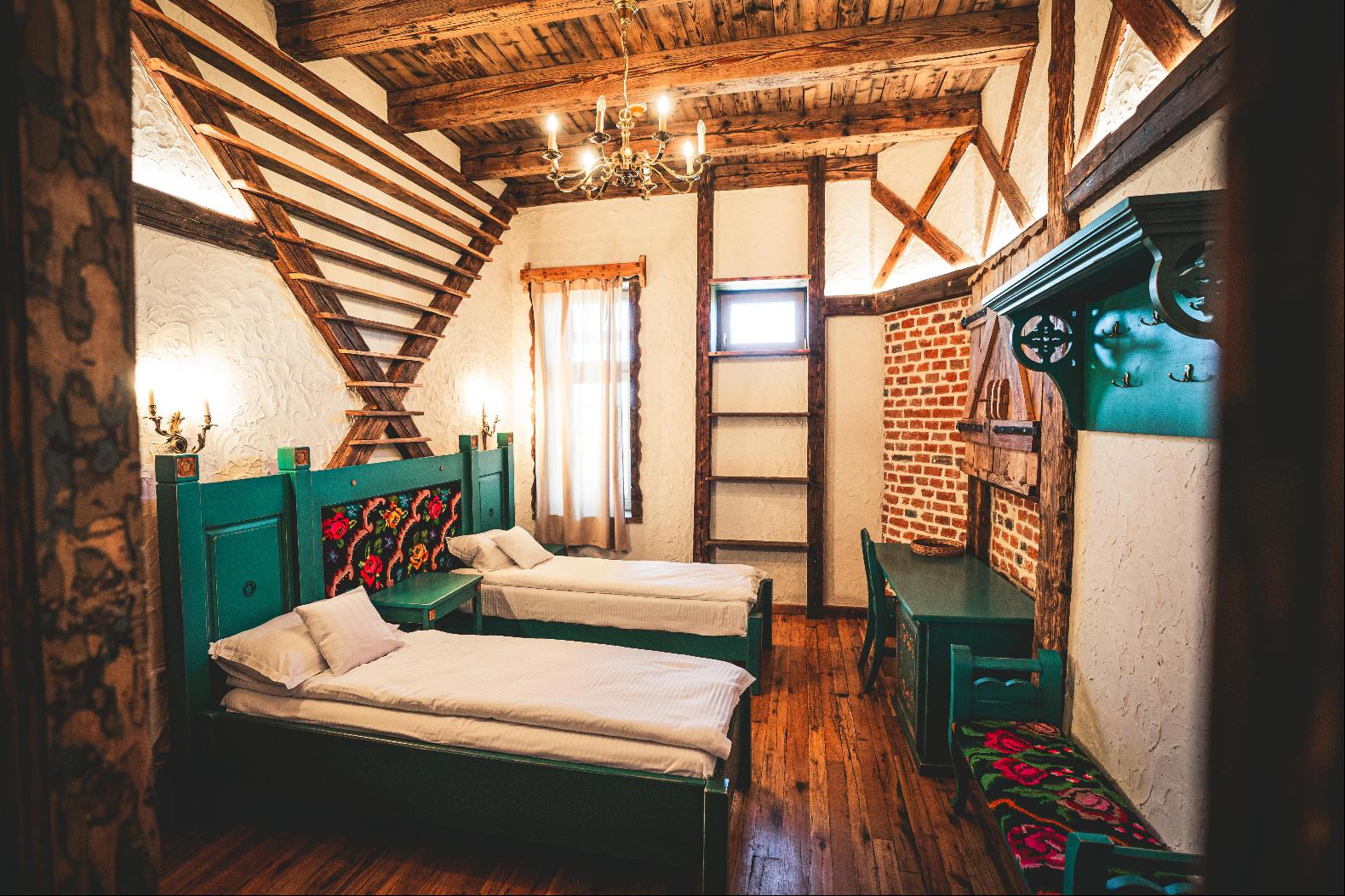
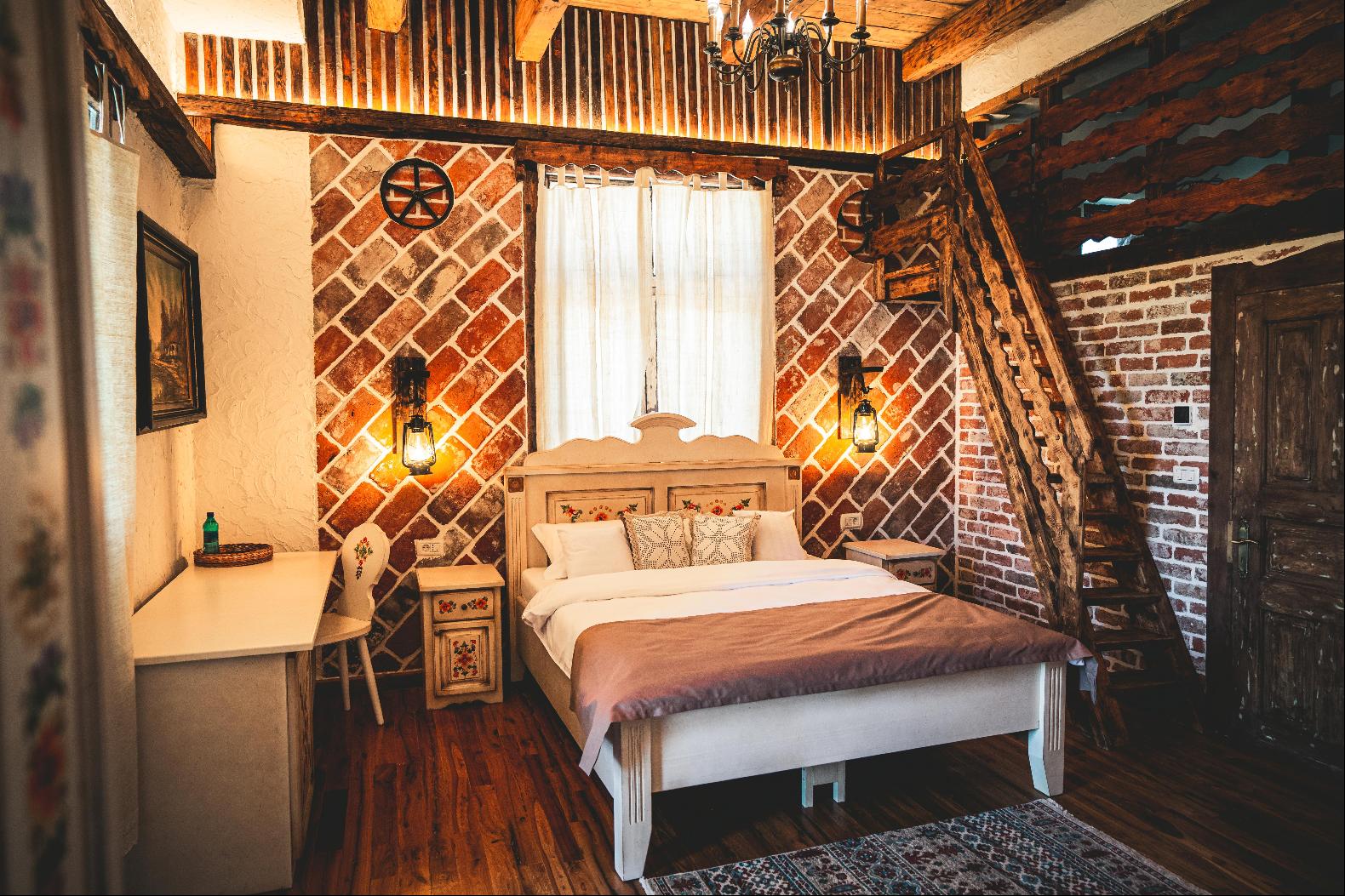
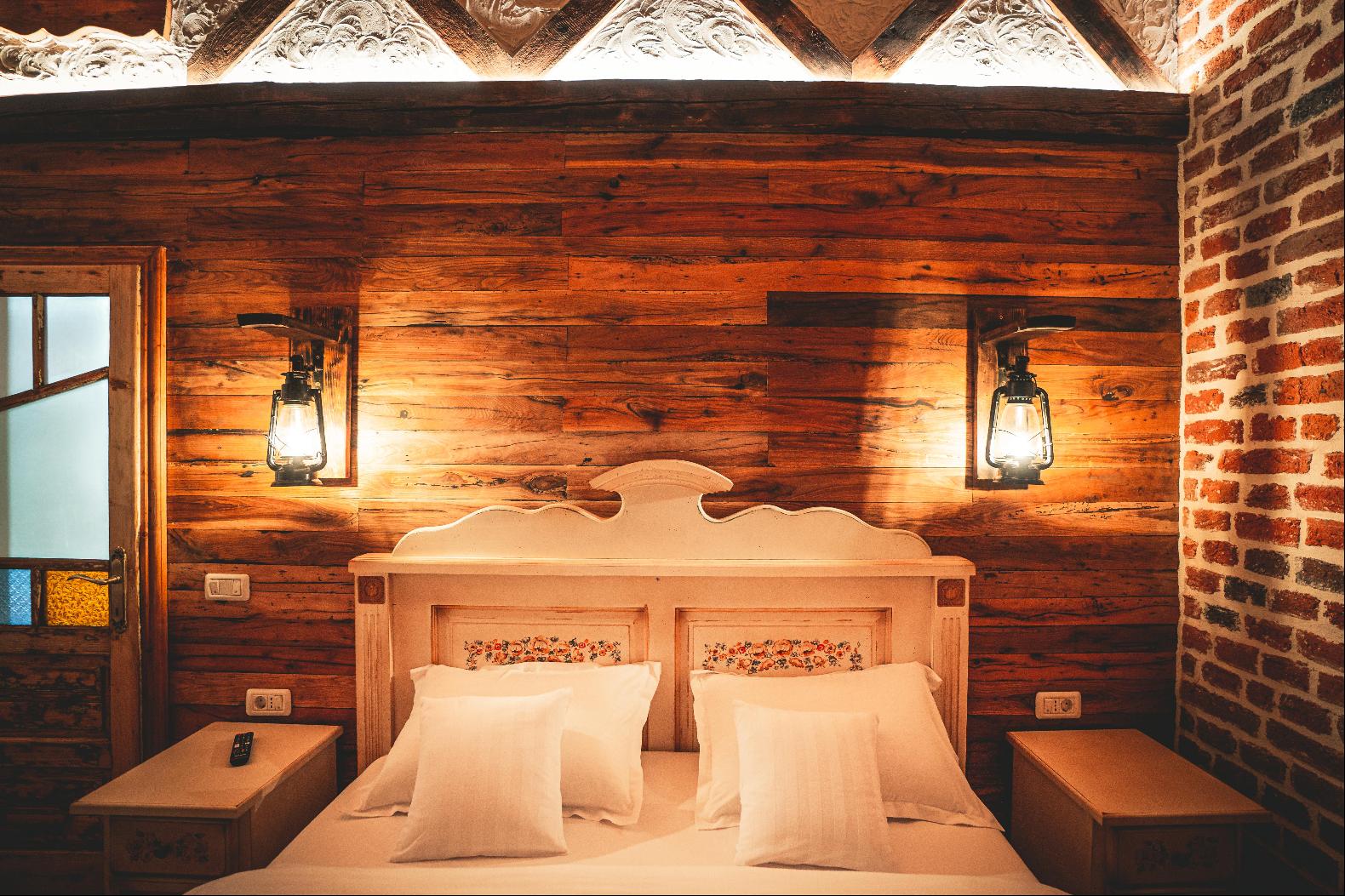
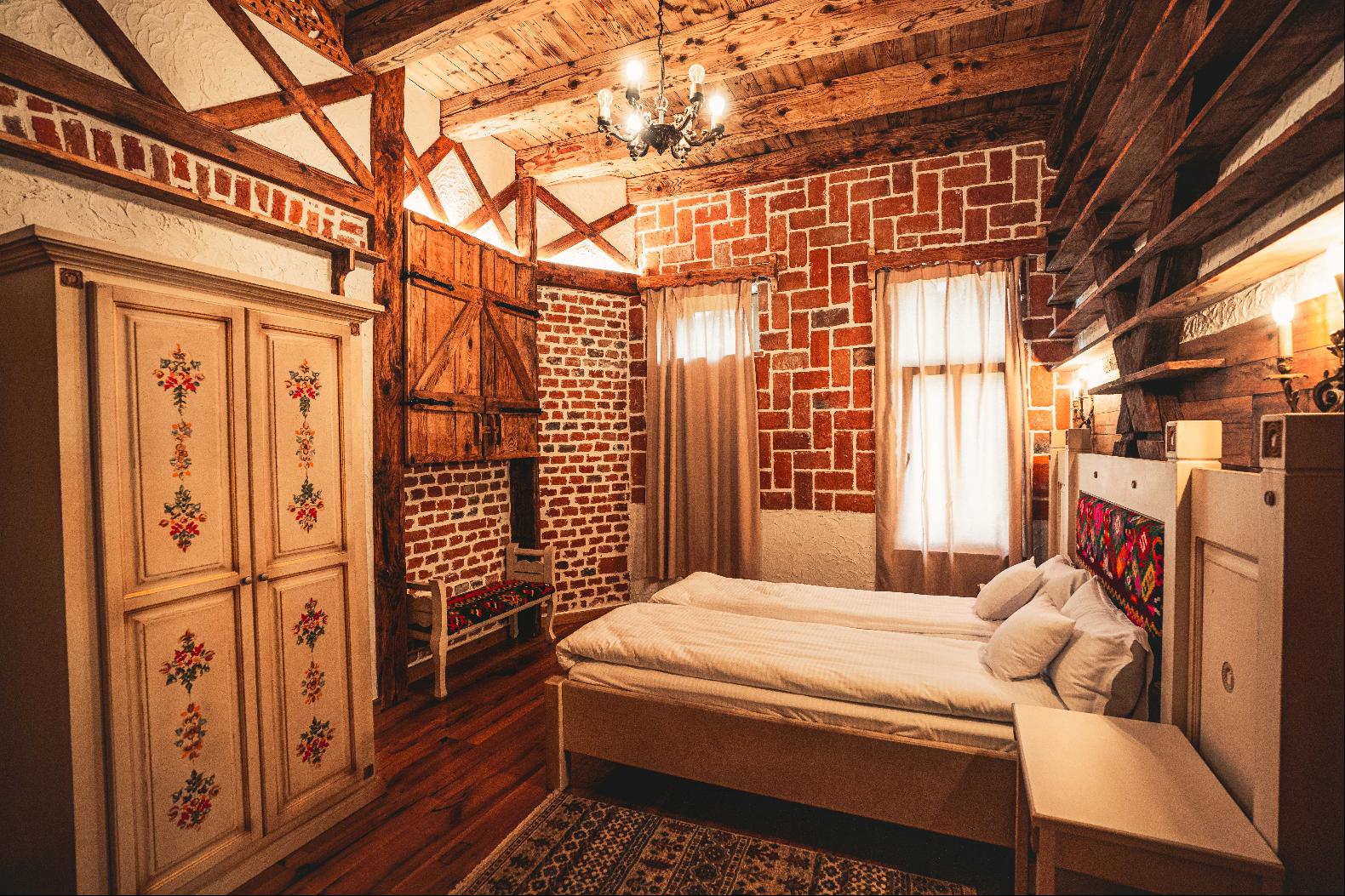
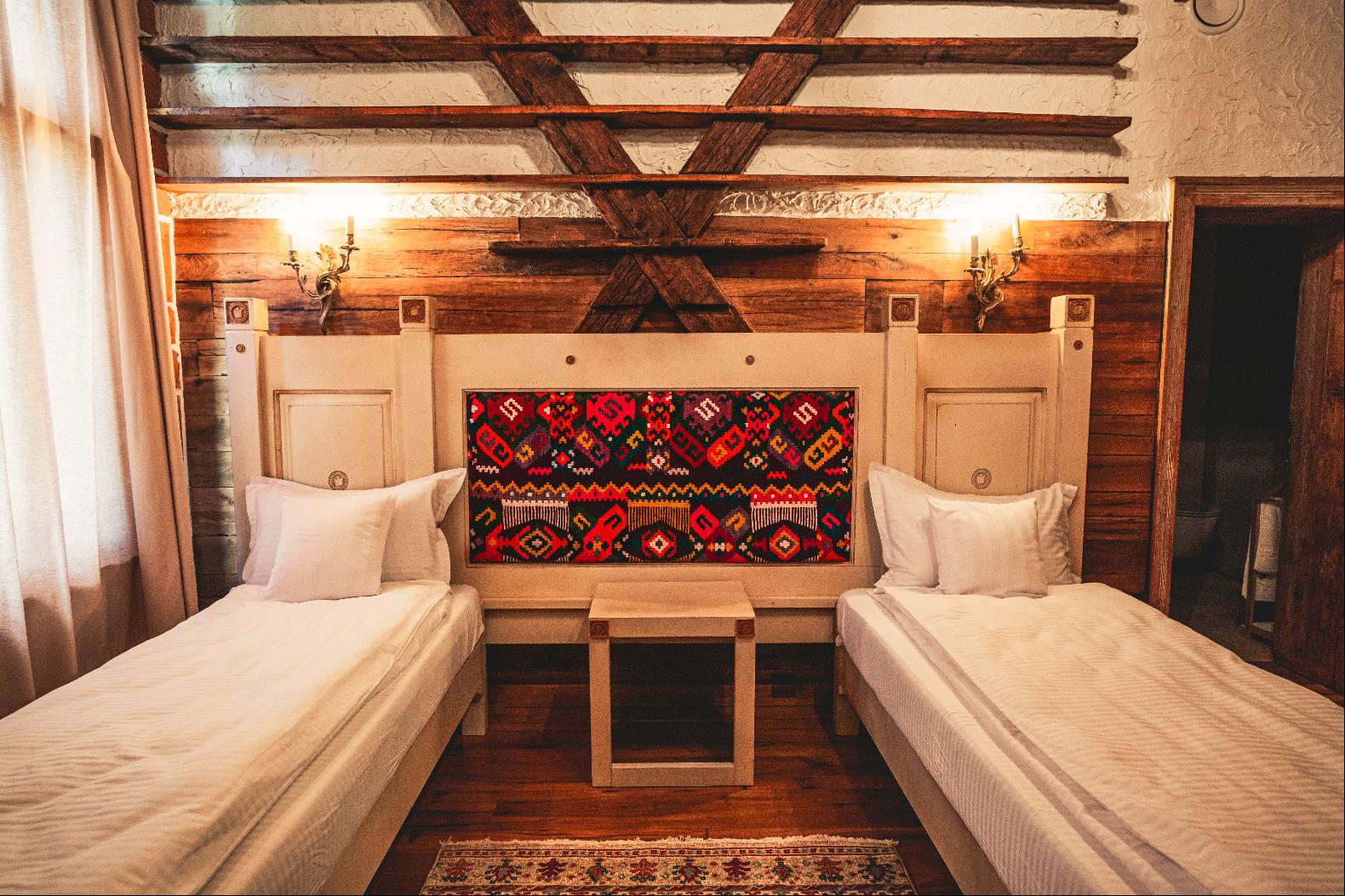
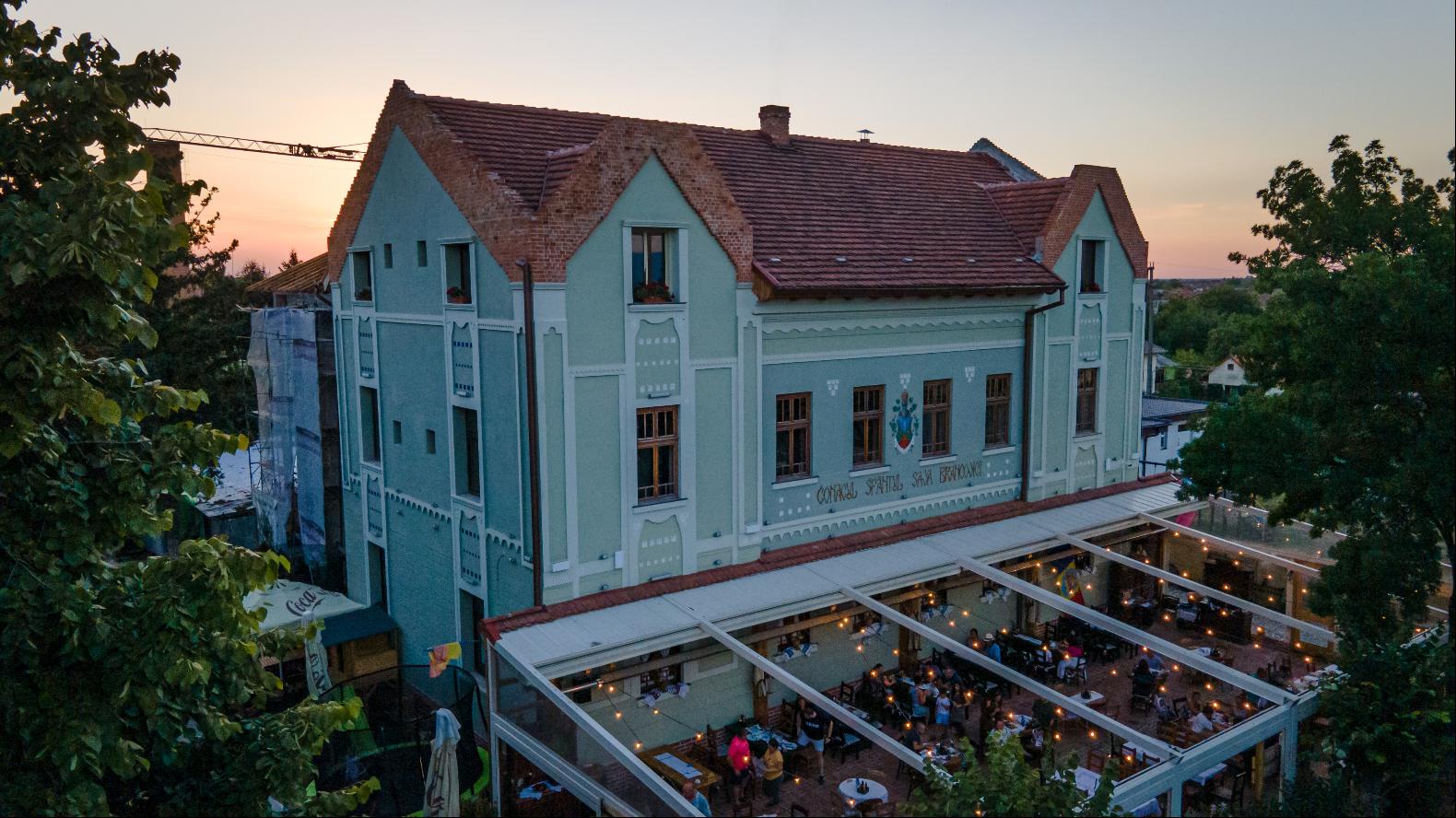
- For Sale
- EUR 2,200,000
- Build Size: 17,738 ft2
- Land Size: 10,128 ft2
- Bedroom: 19
- Bathroom: 19
Ineu is no longer the desolate land of pig farmers and luckly mills that Ioan Slavici wrote about in 1881. Just as it did back then, it knows how to keep up with the times and offer what is needed. The Sava Brancovici Manor stands proud and solid in this small town, always a waypoint for travelers coming from or heading to the east or west. In Michelin Guide terms, if it’s not a destination in itself, this manor is certainly a place worth a detour. Its restoration, carried out with care and good taste, preserves the facades in pastel colors like a baroque pistachio or mint cake, skillfully drizzled with white icing in carefully chosen patterns. The interior maintains stylistic unity, offering ten welcoming rooms featuring traditional elements such as brick, charred wood, traditional washtubs and lanterns, along with painted furniture and floral fabrics. Lively flowers captured in tapestries and on cream or green cupboards bring warmth and capture the light. A spacious restaurant, a 50-seat pizzeria, and a heated terrace with 120 seats provide the necessities, while the parking area includes free charging stations for electric cars.
The manor is named after Saint Sava Brancovici, canonized by the Romanian Orthodox Church in 1955 for being religiously persecuted by the Prince of Transylvania, Michael Apafi I. The Serbian-origin Orthodox priest, a resident of Ineu, opposed Calvinist proselytism and served as the Metropolitan of Transylvania from 1656 to 1680. For these reasons, he is considered a guardian of the town and the Orthodox faith.
Ineu, located 57 kilometers from Arad and about 100 kilometers from Timișoara, has a population of 8,000. It is situated on the national road leading to the border and is a point of interest for tourists attracted by the generous offerings of Zarand Country – the Ineu Castle, the Narcissus Meadow, and the wineries in the Miniș vineyard.
The manor is named after Saint Sava Brancovici, canonized by the Romanian Orthodox Church in 1955 for being religiously persecuted by the Prince of Transylvania, Michael Apafi I. The Serbian-origin Orthodox priest, a resident of Ineu, opposed Calvinist proselytism and served as the Metropolitan of Transylvania from 1656 to 1680. For these reasons, he is considered a guardian of the town and the Orthodox faith.
Ineu, located 57 kilometers from Arad and about 100 kilometers from Timișoara, has a population of 8,000. It is situated on the national road leading to the border and is a point of interest for tourists attracted by the generous offerings of Zarand Country – the Ineu Castle, the Narcissus Meadow, and the wineries in the Miniș vineyard.


